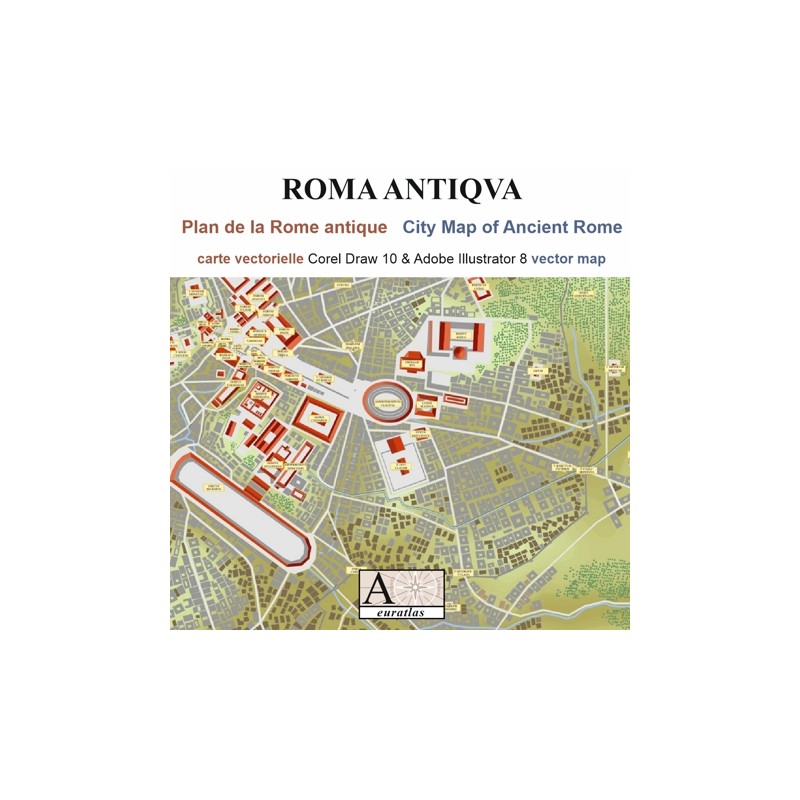



ROMA ANTIQVA: Rome and the Seven Hills with contour lines
 Security policy
Security policy
(edit with the Customer Reassurance module)
 Delivery policy
Delivery policy
(edit with the Customer Reassurance module)
 Return policy
Return policy
(edit with the Customer Reassurance module)
Description
A vector map of ancient Rome in year 100 AD with contour lines, public and private buildings, roads, woods, gardens and labels.
The map allows the display of the Seven Hills only with the prehistoric villages existing before the emergence of the city.
See data description (PDF).
Requirements
Platform independent data, vector format. Corel Draw 10 or higher or Adobe Illustrator 8 or higher required.
The map allows the display of the Seven Hills only with the prehistoric villages existing before the emergence of the city.
Main Features
The map consists of 40 layers or planes. The layers surimposing order, names, fonts and colors can be changed according to User's choice.
1) & 2) flumen: blue ground layer + solum: ground plane in which the river Tiber is drawn.
3 to 25) 23 contour lines with an approximate interval of 2.5 meters.
26) aquulae: small rivers.
27) & 28) romulus: the seven original villages, ~8th century BC. + fora: public squares of Rome in year 100.
29) & 30) pontes: bridges over the Tiber in year 100. + viae: roads and streets in year 100.
31) & 32) aquaeductus: the aqueduct Aqua Claudia. + domus: buildings in brick, concrete or wood.
33) & 34) tectatempla: tile roofs of public buildings and temples. + servius: the so-called Servian Wall built ~4th cent. BC.
35) & 36) horti: gardens and woods. + scripta: Latin labels for the public buildings and temples.
37) & 38) colliscripta: Latin labels for the Seven Hills. + regiones: Latin labels for the Augustan districts.
39) & 40) indexbrit: title block in English. + indexfran: title block in French. Layers 27 and 37 have to be used independently of layers 28 to 36 in order to display the Roman campaign before the emergence of Rome.
Layer 38 cannot be used together with layer 36 unless the names are moved. This vector map is provided with its English and French licence, with a detailed description of the layers and with a short tutorial on how to simulate depth with Corel Draw or Adobe Illustrator.
Review
My father also sent along this interactive map of Rome c. 100 CE, which comes with or without text labels (in English or French). The possibilities for role-playing games, etc., just get better and better. Vanessa T.